
Description
Progressing the future of the Internet of Things (IoT) requires solving key fundamental challenges in computing and information processing. Today, IoT systems enable collecting billions of bits of information from various sensors, devices, and systems. The collected information could be valuable for various markets. Processing the information requires huge computing power. High-performance computing (HPC) may empower artificial intelligence (AI) for producing results and findings that are way beyond what we have witnessed. Furthermore, IoT data analytics platforms that provide easy use of machine learning models (e.g., deep learning) can essentially transform the way businesses operate through data-driven insights.
While IoT and AI offer various benefits to societies, due to larger scales, more complex models, and increased data volumes, the existing challenges of computing and information processing are amplified. These challenges include the deployment of sensors, data collection, communication, and data analytics. To address these challenges, there has been a vast amount of research and development work in the last decade. The work in fields such as high-performance computing, big data analytics, cloud computing, and edge/fog computing can be considered in this context. In addition to those, In addition to the existing challenges, new challenges arise. Processing IoT data, sharing data securely and transparently, creating insights, as well as data privacy are among such key challenges. IoT data analytics platforms aim to solve these problems of information processing.
In this topical area track, we focus on the advancements as well as challenges of the high-performance computing and IoT data analytics platforms. In this context, our topics will include but are not limited to:
- High-performance computing
- High-performance software systems/operating systems
- Network virtualization
- IoT platforms
- Data analytics using AI and ML methods
- Open data markets
- Cloud computing
- Edge/fog computing
- IoT data privacy and security
- Smart cities/smart mobility
- Smart industry
Track Chair
Gurkan Solmaz IoT Research Group, NEC Laboratories Europe, Heidelberg, Germany
 Dr. Gürkan Solmaz is a Senior Researcher at NEC Laboratories Europe, Germany. His research interests include AI/ML, mobile computing, and cloud-edge systems for novel internet of things (IoT) applications to smart cities and smart mobility. He received his BS degree in Computer Engineering from Middle East Technical University (METU) in Turkey and his MS and Ph.D. degrees in Computer Science from the University of Central Florida (UCF) in the USA. At NEC, he has contributed to EU research projects in areas such as IoT, cloud/edge computing, localization, and automated driving. He co-authored more than 40 papers and had publications in top-tier journals and conferences such as IEEE TMC, ACM/IEEE IPSN, and ACM MobiSys. He was co-recipient of two best paper awards (Global IoT Summit’18 and IEEE SCC’19), IEEE IoT Journal best paper runnerup award for 2018-2020 and the UCF Computer Science Ph.D. Student of the Year First Runner-up award. He received the Rhein-Neckar-Grant for young scientists and participated in the Heidelberg Laureate Forum. He regularly serves in the technical program and organizing committees of conferences. He is a member of IEEE, ACM, ComSoc, and SIGMOBILE.
Dr. Gürkan Solmaz is a Senior Researcher at NEC Laboratories Europe, Germany. His research interests include AI/ML, mobile computing, and cloud-edge systems for novel internet of things (IoT) applications to smart cities and smart mobility. He received his BS degree in Computer Engineering from Middle East Technical University (METU) in Turkey and his MS and Ph.D. degrees in Computer Science from the University of Central Florida (UCF) in the USA. At NEC, he has contributed to EU research projects in areas such as IoT, cloud/edge computing, localization, and automated driving. He co-authored more than 40 papers and had publications in top-tier journals and conferences such as IEEE TMC, ACM/IEEE IPSN, and ACM MobiSys. He was co-recipient of two best paper awards (Global IoT Summit’18 and IEEE SCC’19), IEEE IoT Journal best paper runnerup award for 2018-2020 and the UCF Computer Science Ph.D. Student of the Year First Runner-up award. He received the Rhein-Neckar-Grant for young scientists and participated in the Heidelberg Laureate Forum. He regularly serves in the technical program and organizing committees of conferences. He is a member of IEEE, ACM, ComSoc, and SIGMOBILE.
Speakers
Martin Bauer, NEC Laboratories Europe (NLE), Heidelberg, Germany
 Martin Bauer is a Senior Researcher at the IoT research group at the NEC Laboratories Europe (NLE) in Heidelberg, Germany. He received his MSc in Computer and Information Science from the University of Oregon, USA, in 1998, and both his Dipl. Inf. and his doctorate degree from the University of Stuttgart, Germany, in 2000 and 2007 respectively. In 2005 he joined the NEC Laboratories Europe (NLE), where he has been working on context and IoT related research projects as well as standardization activities in the same areas. In particular, Martin Bauer is/has been working on a number of European research projects, most recently in the large scale pilots in IoT, Autopilot and Synchronicity, and in the EU-Japan project Fed4IoT. In standardization, he has actively contributed to OMA NGSI, oneM2M and currently ETSI ISG CIM, primarily on topics related to context management and semantics. Martin Bauer is a personal member of the FIWARE Foundation, which is managing, promoting and evolving the open source platform for smart IoT scenarios. He currently serves as a member of the FIWARE Technical Steering Committee (TSC). Furthermore, he is the AIOTI WG03 sub-group chair for the semantic interoperability topic. He has (co-) authored more than 50 technical papers and has been active as peer reviewer and program committee member for several journals, conferences and workshops. He is a member of IEEE, IEEE Computer Society, IEEE Communications Society and ACM.
Martin Bauer is a Senior Researcher at the IoT research group at the NEC Laboratories Europe (NLE) in Heidelberg, Germany. He received his MSc in Computer and Information Science from the University of Oregon, USA, in 1998, and both his Dipl. Inf. and his doctorate degree from the University of Stuttgart, Germany, in 2000 and 2007 respectively. In 2005 he joined the NEC Laboratories Europe (NLE), where he has been working on context and IoT related research projects as well as standardization activities in the same areas. In particular, Martin Bauer is/has been working on a number of European research projects, most recently in the large scale pilots in IoT, Autopilot and Synchronicity, and in the EU-Japan project Fed4IoT. In standardization, he has actively contributed to OMA NGSI, oneM2M and currently ETSI ISG CIM, primarily on topics related to context management and semantics. Martin Bauer is a personal member of the FIWARE Foundation, which is managing, promoting and evolving the open source platform for smart IoT scenarios. He currently serves as a member of the FIWARE Technical Steering Committee (TSC). Furthermore, he is the AIOTI WG03 sub-group chair for the semantic interoperability topic. He has (co-) authored more than 50 technical papers and has been active as peer reviewer and program committee member for several journals, conferences and workshops. He is a member of IEEE, IEEE Computer Society, IEEE Communications Society and ACM.
Talk Title: IoT Virtualization with ML-based Information Extraction
Abstract: For IoT to reach its full potential, the sharing and reuse of information in different applications and across verticals is of paramount importance. However, there are a plethora of IoT platforms using different representations, protocols and interaction patterns. To address this issue, the Fed4IoT project has developed an IoT virtualization platform that, on the one hand, integrates information from many different source platforms and, on the other hand, makes the information required by the respective users in the target platform of choice. To enable this, information is translated into a common, neutral exchange format, for which NGSI-LD has been chosen, which is being standardized by the ETSI Industry Specification Group on Context Information Management (ETSI ISG CIM). Thing Visors are the components that translate the source information to NGSI-LD, which is then delivered to the target platform and translated into the target format.
ThingVisors can be implemented by hand, but this requires significant human effort, especially considering the plethora of low level information produced by a multitude of sensors. Thus, supporting the human developer and, ideally, fully automating the process of extracting and enriching data and translating it to NGSI-LD is a crucial step. Machine learning is a promising approach for this, but it typically requires large amounts of hand-labelled data for training, an effort that makes it unrealistic in many IoT scenarios. A programmatic labelling approach called knowledge infusion that encodes expert knowledge is used for matching a schema or ontology extracted from the data with a target schema or ontology, providing the basis for annotating the data and facilitating the translation to NGSI-LD.
Eric Simone, Chief Executive Officer, ClearBlade, Inc
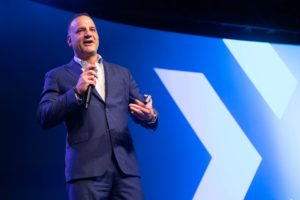 Eric Simone is the Founder and CEO of ClearBlade Inc., an Intelligent Assets software company delivering the promise of IoT and Edge Computing to business people delivering industrial and commercial solutions across several verticals including transportation, infrastructure, and logistics. Prior to starting ClearBlade, Eric was the founder and CEO of Compete Incorporated, an enterprise services company which he sold to Perficient Inc. (PRFT) in May of 2000. Earlier in his career, Eric achieved success in senior engineering, product, and sales positions at IBM and Johns Hopkins Hospital. Eric has a degree in Computer Science from Purdue University and is a recognized Distinguished Alumni. Eric resides in Austin, Texas with his wife Toni and 2 sons, Xander and Dexter.
Eric Simone is the Founder and CEO of ClearBlade Inc., an Intelligent Assets software company delivering the promise of IoT and Edge Computing to business people delivering industrial and commercial solutions across several verticals including transportation, infrastructure, and logistics. Prior to starting ClearBlade, Eric was the founder and CEO of Compete Incorporated, an enterprise services company which he sold to Perficient Inc. (PRFT) in May of 2000. Earlier in his career, Eric achieved success in senior engineering, product, and sales positions at IBM and Johns Hopkins Hospital. Eric has a degree in Computer Science from Purdue University and is a recognized Distinguished Alumni. Eric resides in Austin, Texas with his wife Toni and 2 sons, Xander and Dexter.
Title: Modernizing Infrastructure with Intelligent Assets
Abstract: There is an ever present need to modernize infrastructure in multiple industries across the world. The need to provide more efficient transportation, more reliable power, cleaner water, and more productive farming grows greater by the day and we need a better way to enable the business to apply modern technologies in a simpler way. We all depend on infrastructure, our future and our planet’s future relies on having a modern highly capable infrastructure.
The industry is shifting – Intelligent Assets is driving the modernization of infrastructure by combining edge computing, no-code, artificial intelligence and hardware to deliver an experience that doesn’t require a computer science degree to roll out. Companies are modernizing infrastructure and scaling in weeks with Intelligent Assets as their business units do their own automation. Now is the time to begin implementing Intelligent Assets and start on the path to creating more modern infrastructures.
Semih Aslan, Texas State University, Texas, USA
Dr. Semih Aslan received a B.Sc. degree in electrical engineering from Istanbul Technical University in 1994, M.Sc. degree in electrical engineering from Illinois Institute of Technology in 2003, and Ph.D. degree in computer engineering from Illinois Institute of Technology in 2010. He has worked as a Senior FPGA Design Engineer with the Motorola LTE Division and as a post-doctoral researcher at Illinois Institute of Technology. He joined the Ingram School of Engineering at Texas State University in 2011, where he is currently an Associate Professor. Dr. Aslan is the founding director of the System Modeling and Renewable Technology (SMART) Lab. He currently advises graduate students on green energy, system design and data analysis projects and has numerous publications. He is a Senior IEEE member.
Thomas Coughlin, Coughlin Associates

Tom Coughlin, President, Coughlin Associates is a digital storage analyst as well as a business and technology consultant. He has over 40 years in the data storage industry with engineering and management positions at several companies.
Dr. Coughlin has many publications and six patents to his credit. Tom is also the author of Digital Storage in Consumer Electronics: The Essential Guide, which is now in its second edition with Springer. Coughlin Associates provides market and technology analysis as well as Data Storage Technical and Business Consulting services. Tom publishes the Digital Storage Technology Newsletter, the Media and Entertainment Storage Report, the Emerging Non-Volatile Memory Report and other industry reports. Tom is also a regular contributor on digital storage for Forbes.com and other blogs.
Tom is active with SMPTE (Journal article writer and Conference Program Committee), SNIA (including a founder of the SNIA SSSI, now CMSI), the IEEE, (he is an IEEE President Elect Candidate in 2021, Past Director for IEEE Region 6, Past President of IEEE USA, Past Chair of the IEEE New Initiatives and Public Visibility Committees and active in the Consumer Electronics Society) and other professional organizations. Tom is the founder and organizer of the Storage Visions Conference (www.storagevisions.com as well as the Creative Storage Conference (www.creativestorage.org). He was the general chairman of the annual Flash Memory Summit for 10 years. He is a Fellow of the IEEE and a board member of the Consultants Network of Silicon Valley (CNSV). For more information on Tom Coughlin and his publications and activities go to www.tomcoughlin.com.
Title: Digital Storage and Memory for AI at the Edge and the Data Center
Abstract: Applying AI at the edge and endpoints often requires working under non-data center environments and in power constrained conditions. AI inference also requires significant memory to hold weighting values from training. New non-volatile memories can help provide more memory in a given device die and use less power than NOR flash, SRAM or DRAM. This presentation will talk about changes in the memory/storage hierarchy and how it will change memory and storage in data centers and embedded devices to support energy efficient and low latency AI applications.
Ella Peltonen, University of Oulu, Finland
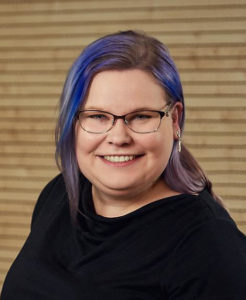 Dr Ella Peltonen is a research scientist with the Center for Ubiquitous Computing, University of Oulu, Finland. She gained her PhD at the University of Helsinki and did her postdoc period at the Insight Centre for Data Analytics, University College Cork, Ireland. Her research focuses on pervasive everyday sensing, edge-native machine learning, and “from data to actions” including ubiquitous recommendation systems and data analytics. She has been granted Marc Weiser Best Paper Award 2015, Rising Stars in Networking and Communications 2017, The European Initiative EPIC Grant 2018, and Nokia Foundation Jorma Ollila Grant 2018.
Dr Ella Peltonen is a research scientist with the Center for Ubiquitous Computing, University of Oulu, Finland. She gained her PhD at the University of Helsinki and did her postdoc period at the Insight Centre for Data Analytics, University College Cork, Ireland. Her research focuses on pervasive everyday sensing, edge-native machine learning, and “from data to actions” including ubiquitous recommendation systems and data analytics. She has been granted Marc Weiser Best Paper Award 2015, Rising Stars in Networking and Communications 2017, The European Initiative EPIC Grant 2018, and Nokia Foundation Jorma Ollila Grant 2018.
Title: Towards Real-time Learning for Edge-Cloud Continuum with Vehicular Computing
Abstract: Sensor-driven IoT systems are well-known for their capacity to accelerate massive amounts of data in a comparatively short period of time. To have any use, the information delivery and decision making based on the data require efficient learning models together with dynamically deployed computing and network resources. The current cloud and high-performance computing infrastructures, as well as modern edge computing systems especially in the 5G and beyond networks, can be addressed to resolve these challenges. However, there are several application areas especially in vehicular and urban computing, where just harnessing more computational power does not solve computational and real-rime requirements of the modern sensing systems that operate in mobile and context-dependent environments. For now, mathematical challenges of distributed computing and real-time learning algorithms have not been profoundly addressed in the context of the IoT and real-world sensing applications. Data-driven systems also require giving full attention to information delivery, data management, data cleaning, and sensor fusion technologies that need to be equally distributed and real-time competent as the learning algorithms themselves. New software-defined computing and networking approaches and architectures are required to orchestrate the numerous connected resources dynamically, controllably, and securely along with the evolving needs. The key challenge here is to uniform collaboration between different aspects of the system, from data processing and delivery to the algorithms and learning models, not forgetting the computational capacity and networking capabilities, all this in real-time with real-world applications.
Damian Valles, Texas State University, Texas, USA
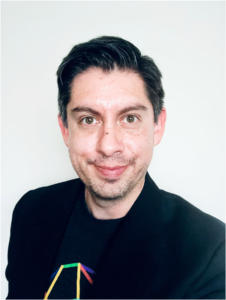 Dr. Damian Valles is an Assistant Professor for the Ingram School of Engineering at Texas State University. He focuses on High-Performance Computing (HPC), Machine Learning (ML), and Embedded System implementations under the High-Performance Engineering (HiPE) research group. Dr. Valles received his B.S., M.S, and PhD. from The University of Texas at El Paso from the Electrical and Computer Engineering Department, focusing on Reconfigurable Processors and HPC research. Dr. Valles did a post-doc at Montana Tech as the HPC Application Scientist under the Computer Science department. He also worked as an HPC System Administrator in the Information Systems department and adjunct position in the Computer Science department at Wake Forest University. He is currently a member of IEEE, ACM, ACM’s SIGHPC, and SHPE.
Dr. Damian Valles is an Assistant Professor for the Ingram School of Engineering at Texas State University. He focuses on High-Performance Computing (HPC), Machine Learning (ML), and Embedded System implementations under the High-Performance Engineering (HiPE) research group. Dr. Valles received his B.S., M.S, and PhD. from The University of Texas at El Paso from the Electrical and Computer Engineering Department, focusing on Reconfigurable Processors and HPC research. Dr. Valles did a post-doc at Montana Tech as the HPC Application Scientist under the Computer Science department. He also worked as an HPC System Administrator in the Information Systems department and adjunct position in the Computer Science department at Wake Forest University. He is currently a member of IEEE, ACM, ACM’s SIGHPC, and SHPE.
Title: Computation and IoT Considerations for Smart Autonomous Embedded Firefighting Systems
Abstract: The telemetry of data during emergencies is essential to understand the current state of the emergency and help to augment the enhancement of planning by the first responders. Firefighting presents challenging environments that are not also to people but to the electronics that can provide vital information for IoT implementation. Ideally, the fire crew can deploy autonomous units to perform data collection as firefighters prepare for rescue and containment of the fire. The peripherals equipped on the autonomous units will require designs that can provide environmental information, the location of stranded people, scream detection, LiDAR, and other sensors. An essential part of the autonomous design is recognizing the best way to navigate without being stomp, dysfunctional due to high temperatures, and possibly not getting melted during the process. Furthermore, the design increases in complexity when dealing with high story buildings and limited resources. The goal of intelligent firefighting responses is to have the ability to dynamically create a data-rich environment autonomously and provide reliable data and results to the fire responders. The discussion covers the complex design necessities, efforts, data, and required computation to provide information to experts right before firefighters react to the fire emergency.
Brad Kirby, CPA, CA, CBP, COO, EDJX International
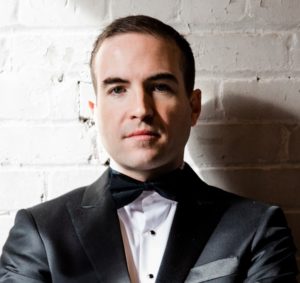
Brad is a seasoned digital transformation professional with over 15 years of experience and a passion for bleeding edge technology, currently serving as COO at EDJX. In 2021, EDJX has been recognized for various awards including CRN’s Top 10 Coolest IoT Software Companies, Futuriom Cloud 40, STL Edge Computing 60, and in Forbes as a future crop of computing IPOs. EDJX is building the world’s largest edge cloud for the era of connected thing with unprecedented reach, simplicity and security.
Brad has a strong entrepreneurial spirit and after launching his first start-up in 2004, his professional career commenced at Deloitte in 2007. After the 2008 financial crisis, he transferred to Deloitte’s financial advisory group in Cayman Islands to aid in hedge fund insolvency, restructuring and asset recovery. The crisis revealed unprecedented level of fraud and insolvency committed onshore by investment managers, tasking firms like Deloitte with challenging asset recovery, restructuring, and forensic litigation engagements to recover assets for investors. and Brad was also instrumental in creating proprietary data analytic software, developing a custom fund management system, and various other technology to efficiently recover assets for investors.
In 2013, he moved back to Toronto to join Brookfield Asset Management, one of the world’s largest real asset manager and spent 5 years splitting time as Brookfield’s global finance transformation initiatives while also overseeing global capital markets and treasury, which included $400B of debt, 400 lending relationships, and over $1T in annual derivatives trading for financial risk management.
In Jan 2020, he started The Next Wave Podcast with Dean Nelson (former Head of Uber Compute) and James Thomason (Former CTO of Dell Cloud).
Title: Edge Computing and IoT – PINNing Autonomy
Abstract: IoT is redefining event-driven software, putting machines and devices capable of infinite scalability and efficiency in the place of human intervention. Computing in the era of IoT is moving out of the realm of the abstract – spreadsheets, mobile apps, websites and software-as-a-service platforms – and into the real world to power augmented reality, empower decision-making via AI and machine learning, operate cars and increase public safety. In turn, connected and autonomous systems require maximum tolerable latency that cannot be supported by current computing and network architectures.
The path to decision-making AI and autonomy requires compute at the edge that will also transform IoT into operational efficiency. EDJX is transforming the current IoT landscape – characterized by point solutions, complexity and a fragmented vendor ecosystem – and in partnership with Austin, Texas-based Autonomy Institute launching the vehicle for this change: Public Infrastructure Network Node (PINN).
PINNs will enable Intelligent and Autonomous cities and open up a substantial opportunity for research and development. PINNs will become the critical infrastructure required to advance intelligent and autonomous solutions for city resilience. PINN clusters will be deployed within cities, on highways, across military installations and in rural communities to accelerate the nation’s digital infrastructure buildout. The goal is to have tens of thousands of PINNs deployed by mid-2022. My panel contribution will define PINN, what is involved in operationalizing it, timeframe for launching and scaling PINN, and what it will mean for the edge computing and the future of digital infrastructure in empowering smart cities of the future.
Mustafa Ilhan Akbas, Embry-Riddle Aeronautical University, Florida, USA
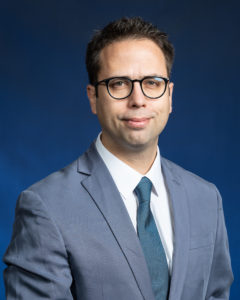 Dr. M. Ilhan Akbas is an Assistant Professor of Electrical and Computer Engineering at Embry-Riddle Aeronautical University. He holds a Ph.D. degree in Computer Engineering from the University of Central Florida (UCF), where he also received the UCF Interdisciplinary Information Science and Technology Laboratory Fellowship. Dr. Akbas has research interests in connected and autonomous vehicles, cyber-physical systems, software defined networks, modeling and simulation. He was at the center of emerging autonomous vehicle research capability at the Florida Polytechnic University, where he was a founding member of the Advanced Mobility Institute. He has been covered by media and gave invited talks at international venues for his research on developing novel solutions for the testing and validation of autonomous vehicles. His research projects have been supported by NSF, Florida Cyber and industry. He received his BS and MS degree in Electrical and Electronics Engineering from Middle East Technical University (METU) in Turkey and his Ph.D. degree in Computer Engineering from the University of Central Florida (UCF) in the USA, where he also received the UCF Interdisciplinary Information Science and Technology Laboratory Fellowship. Before academia, Dr. Akbas had professional experience in defense industry, where he participated in multinational telecommunications projects and became a Cisco Certified Network Associate (CCNA). Dr. Akbas is a member of IEEE, ACM and Complex Systems Society. He is the author of more than 50 articles, which have appeared in prestigious venues such as IEEE Transactions, Society of Automotive Engineers (SAE) edge reports and flagship conferences of IEEE and ACM. He is an NSF Panelist and serves in the technical program committees of IEEE conferences.
Dr. M. Ilhan Akbas is an Assistant Professor of Electrical and Computer Engineering at Embry-Riddle Aeronautical University. He holds a Ph.D. degree in Computer Engineering from the University of Central Florida (UCF), where he also received the UCF Interdisciplinary Information Science and Technology Laboratory Fellowship. Dr. Akbas has research interests in connected and autonomous vehicles, cyber-physical systems, software defined networks, modeling and simulation. He was at the center of emerging autonomous vehicle research capability at the Florida Polytechnic University, where he was a founding member of the Advanced Mobility Institute. He has been covered by media and gave invited talks at international venues for his research on developing novel solutions for the testing and validation of autonomous vehicles. His research projects have been supported by NSF, Florida Cyber and industry. He received his BS and MS degree in Electrical and Electronics Engineering from Middle East Technical University (METU) in Turkey and his Ph.D. degree in Computer Engineering from the University of Central Florida (UCF) in the USA, where he also received the UCF Interdisciplinary Information Science and Technology Laboratory Fellowship. Before academia, Dr. Akbas had professional experience in defense industry, where he participated in multinational telecommunications projects and became a Cisco Certified Network Associate (CCNA). Dr. Akbas is a member of IEEE, ACM and Complex Systems Society. He is the author of more than 50 articles, which have appeared in prestigious venues such as IEEE Transactions, Society of Automotive Engineers (SAE) edge reports and flagship conferences of IEEE and ACM. He is an NSF Panelist and serves in the technical program committees of IEEE conferences.
Title: Real-Time Meteorological Observations for Urban Air Mobility Using IoT
Abstract: Urban environment in a future smart city will have multiple modes of transportation to tackle problems in the efficient transportation of people and goods. Urban air mobility (UAM) brings the vertical component to the urban mobility and presents opportunities for a more efficient and integrated urban transportation system. In this setting, UAM is expected to operate in the urban boundary layer (UBL), which has not been a common environment for sustained aviation operations in the urban air space. UBL is a very dynamic environment with constant changes in its spatial and temporal elements. Additionally, conventional UAM vehicles are sensitive to weather conditions due to their limited thrust and slower speeds. Hence, urban environment requires a high-resolution data collection solution for the pervasive use of UAM vehicles. This talk will present the potential of crowdsensing using IoT in the urban area for real-time and high-resolution data collection for UAM operations. The talk will elaborate on the open issues, challenges, and future directions.
Luis Sanchez, University of Cantabria, Spain
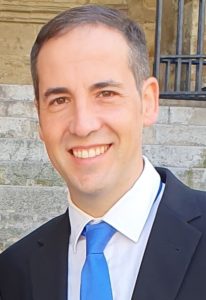 Dr. Luis Sanchez is Associate Professor of Telecommunications Engineering at University of Cantabria (Spain). He holds a Ph.D. degree in Telecommunications from the University of Cantabria (2009). Currently, his research is focused on the aspects of machine learning and network technologies of the Internet of Things (IoT) and its application to Smart Cities and Industry 4.0. He also works on the integration of these networks in the Semantic Web for the provision of interoperable services through the “Web of Things”. His research activity has been developed mainly in the framework of international cooperative projects from the 5th, 6th and 7th Framework Program and Horizon 2020 of the European Commission. In this sense, he has collaborated in more than a dozen of projects in the last 5 years where he has acted as Coordinator for some of them. As a result of this work, he has (co-) authored more than 60 scientific articles in journals and international congresses of recognized prestige as well as participated as guest speaker at major conferences in the area. Moreover, he frequently peer-reviews articles for journals included in the first quartiles of the JCR and for international conferences and workshops taking part also in the organizing and program committees of the latter. Finally, he is also regularly invited to participate as external expert reviewer for the European (EC), Spanish (AEI), French (ANR) and Italian (MIUR) Research Agencies evaluating research projects for competitive Calls.
Dr. Luis Sanchez is Associate Professor of Telecommunications Engineering at University of Cantabria (Spain). He holds a Ph.D. degree in Telecommunications from the University of Cantabria (2009). Currently, his research is focused on the aspects of machine learning and network technologies of the Internet of Things (IoT) and its application to Smart Cities and Industry 4.0. He also works on the integration of these networks in the Semantic Web for the provision of interoperable services through the “Web of Things”. His research activity has been developed mainly in the framework of international cooperative projects from the 5th, 6th and 7th Framework Program and Horizon 2020 of the European Commission. In this sense, he has collaborated in more than a dozen of projects in the last 5 years where he has acted as Coordinator for some of them. As a result of this work, he has (co-) authored more than 60 scientific articles in journals and international congresses of recognized prestige as well as participated as guest speaker at major conferences in the area. Moreover, he frequently peer-reviews articles for journals included in the first quartiles of the JCR and for international conferences and workshops taking part also in the organizing and program committees of the latter. Finally, he is also regularly invited to participate as external expert reviewer for the European (EC), Spanish (AEI), French (ANR) and Italian (MIUR) Research Agencies evaluating research projects for competitive Calls.
Talk Title: Future Internet Enabled Resilient Cities Through Data Enrichment
Abstract: Smart cities hold the potential to be a key driver and catalyst in creating a large scale global IoT market of services and hardware. However, the emerging smart city market faces specific challenges that act as barriers to growth, impeding rapid innovation and inhibiting widespread market adoption. The smart city market is still largely fragmented, with vertical solutions dominating and horizontal solutions more mirroring experimental petri dishes rather than solutions to real problems. This results in below-critical mass efforts in standardization and commodity solutions. Vendor lock-in thus dictates the landscape, resulting in lowering cities’ confidence that smart city strategies can achieve a major change. Conversely, the fragmentation of emerging IoT-enabled city platforms makes it difficult for entrepreneurs and SMEs to achieve economies of scale by replicating innovative solutions from one city to another. FIERCE (RTI2018-093475-A-I00) and CEF-SALTED (2020-EU-IA-0274) projects are leveraging the technological enablers to support the principles for resilient urban planning and design. Firstly, exploring the technical foundations of a digital single market for Future-Internet-enabled resilient cities, where all the relevant stakeholders in the IoT environment can innovate and compete in an open interoperable environment. Secondly, providing a set of methodologies, processes and guidelines that empower IoT technology and smart city service providers. This empowerment will come in the form of an AI-based Data Enrichment Pipeline that includes entity alignment, entity linking, data enrichment and contextualization, as well as, the creation of contextualized Digital Twins for places and situations. Altogether, this will allow a better design of solutions to address citizen needs around the market place. Last, but not least, promoting the openness of this data through Open Data platforms such as the European Data Portal is of utmost importance for the uptake of new value-added smart city services.
Louis Calvin Touko Tcheumadjeu, German Aerospace Center (DLR), Berlin, Germany
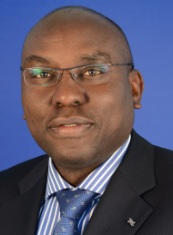 Dipl.-Ing. Louis Calvin Touko Tcheumadjeu is a senior engineer in electrical engineering and computer science with more than 15 years business experience in the design and development of complex software systems. He received his engineering diploma in electrical engineering and computer science from Technical University Berlin (TUB), Germany, in 2004. After graduation he has worked as a research scientist on strategic research projects at the distributed artificial intelligence laboratory (DAI-Labor) of the TUB and at the Deutsche Telekom Laboratory (T-Labs) in Berlin. In 2007, he joined the German Aerospace Center (DLR) and since this time he works as research scientist at the Institute of Transportation Systems in Berlin, Germany. He participated in several national and international ITS projects mainly funded by different German Federal Ministries and the European Union. He is author of several scientific publications in peer reviewed journals, conferences and books. He received the best paper award at the INTSYS conference 2017 funded by the European Alliance for Innovation in Hyvingaa, Finland. He was a speaker at several national and international conferences (IEEE ITSC, ITS World Congress and ITS European Congress, World Conference on Transport Research – WCTR, Disaster Management and SUMO conference). He is currently engaged in research and development of innovative ITS telematics solutions for individual mobility management with focus on the IoT technology.
Dipl.-Ing. Louis Calvin Touko Tcheumadjeu is a senior engineer in electrical engineering and computer science with more than 15 years business experience in the design and development of complex software systems. He received his engineering diploma in electrical engineering and computer science from Technical University Berlin (TUB), Germany, in 2004. After graduation he has worked as a research scientist on strategic research projects at the distributed artificial intelligence laboratory (DAI-Labor) of the TUB and at the Deutsche Telekom Laboratory (T-Labs) in Berlin. In 2007, he joined the German Aerospace Center (DLR) and since this time he works as research scientist at the Institute of Transportation Systems in Berlin, Germany. He participated in several national and international ITS projects mainly funded by different German Federal Ministries and the European Union. He is author of several scientific publications in peer reviewed journals, conferences and books. He received the best paper award at the INTSYS conference 2017 funded by the European Alliance for Innovation in Hyvingaa, Finland. He was a speaker at several national and international conferences (IEEE ITSC, ITS World Congress and ITS European Congress, World Conference on Transport Research – WCTR, Disaster Management and SUMO conference). He is currently engaged in research and development of innovative ITS telematics solutions for individual mobility management with focus on the IoT technology.
Title: Internet of Things (IoT) for autonomous driving in case of Automated Valet Parking (AVP)
Abstract: The service development of autonomous driving use cases progressed by the internet of Things (IoT) is introduced in the presentation. In the context of six autonomous driving use cases, which were developed and realised for the European large scale project AUTOPILOT, the focus of the presentation is on the system design and development of the Automated Valet Parking (AVP) use case enabled by the IoT technology to support smart mobility for the future. Finally, the results of the field operational test at a pilot site in the Netherlands (Brainport) are presented.
Aaron Ding, CPI Lab, TU Delft, Netherlands
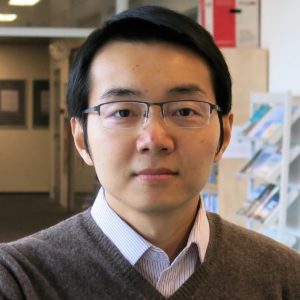 Dr. Aaron Ding is leading the Cyber-Physical Intelligence (CPI) Lab at TU Delft in the Netherlands. As Tenured Asst Professor of TU Delft and Adjunct Professor in Computer Science at University of Helsinki, his research focuses on edge computing, edge AI, and data-driven IoT services. He has been awarded EU research funding as Consortium Director (€5M) and Principal Investigator (€1.1M) by leading a series of international and national R&D projects (H2020, Marie Curie ITN, German DAAD) in tight collaboration with industrial companies. Prior to TU Delft, he has worked at TU Munich in Germany, Columbia University in the USA, and University of Cambridge in the UK. He obtained his PhD from the Department of Computer Science at University of Helsinki. As funded by Nokia Foundation, vital part of his PhD programme was completed at University of Cambridge and at Columbia University in New York. His research work has received best paper awards and recognition from ACM SIGCOMM, ACM EdgeSys, ACM SenSys CCIoT, and IEEE INFOCOM. He is a two-time recipient of the esteemed Nokia Foundation Scholarships.
Dr. Aaron Ding is leading the Cyber-Physical Intelligence (CPI) Lab at TU Delft in the Netherlands. As Tenured Asst Professor of TU Delft and Adjunct Professor in Computer Science at University of Helsinki, his research focuses on edge computing, edge AI, and data-driven IoT services. He has been awarded EU research funding as Consortium Director (€5M) and Principal Investigator (€1.1M) by leading a series of international and national R&D projects (H2020, Marie Curie ITN, German DAAD) in tight collaboration with industrial companies. Prior to TU Delft, he has worked at TU Munich in Germany, Columbia University in the USA, and University of Cambridge in the UK. He obtained his PhD from the Department of Computer Science at University of Helsinki. As funded by Nokia Foundation, vital part of his PhD programme was completed at University of Cambridge and at Columbia University in New York. His research work has received best paper awards and recognition from ACM SIGCOMM, ACM EdgeSys, ACM SenSys CCIoT, and IEEE INFOCOM. He is a two-time recipient of the esteemed Nokia Foundation Scholarships.
Title: Towards Sustainable and Trustworthy Edge AI
Despite of its promise and potential, Edge AI is facing two major challenges for large scale deployment: energy optimization and trustworthiness.
As an important goal of sustainability, the energy consumption of Edge AI needs to be optimized. The energy efficiency is crucial for Edge AI embedded infrastructures (e.g., road side units, micro base stations) to sustainably support advanced autonomous driving and Extended Reality (XR) services in the years to come. Through the pipeline of data acquisition, transfer, computation, and storage, there exists the possibility for Edge AI to trade off accuracy to less power and less time consumed. For instance, noisy inputs from numerous sensors can be selectively processed and transferred in order to save energy. A set of applications would be satisfied with an ‘acceptable’ accuracy instead of exact and absolutely correct results. By introducing this new dimension of accuracy to the optimization design, the energy efficiency can even be improved by a factor of 10x.
Concerning trustworthiness, Edge AI benefits from its close proximity to the end-devices and users. However, due to the distributed deployment and deep penetration into personal context, the safety and perceived trustworthiness for Edge AI services are raising concerns among the stakeholders (e.g., end users, public sectors, ISP). To achieve trustworthy Edge AI, critical building blocks are needed including verification and validation software-hardware mechanisms that ensure transparency and explainability, especially in the training and deployment of Edge AI in decentralized, uncontrolled environments. The trustworthiness of Edge AI is a stepping stone to establish an appropriate governance and regulatory framework, on which the promise of Edge AI can be built.


